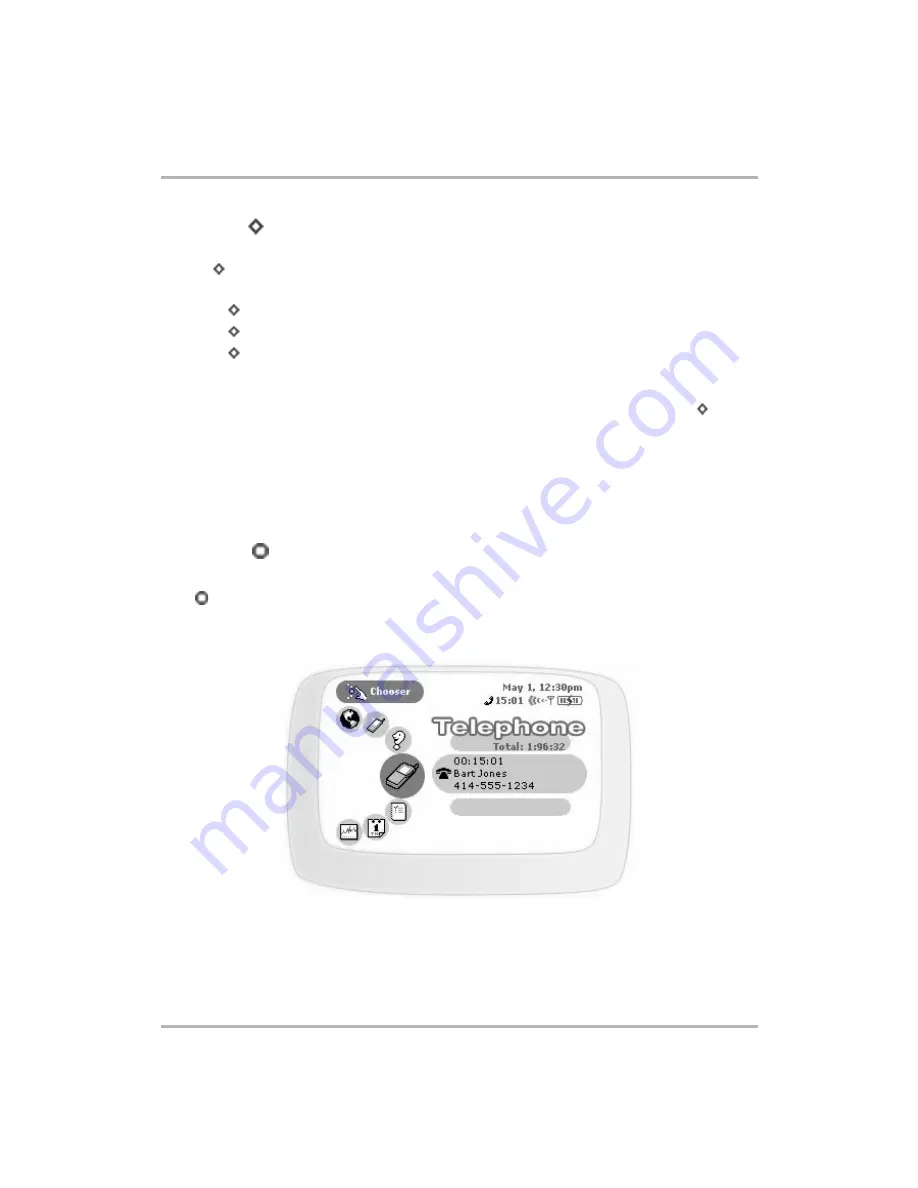
Device Basics
February 12, 2002
T-Mobile Device Owner’s Manual
18
Menu Button
The Menu button is located in the upper-left corner of the device and is marked by a diamond. When you see the
diamond
on the device screen or in the documentation, this refers to the Menu button. Use the Menu button
to do the following:
• Press
once to open a drop-down menu listing actions you can take from the current screen.
• Press
again to close the drop-down menu.
• Press
in combination with a shortcut key to perform an action. There are two types of shortcut keys:
- User-definable - Read more in
- System-defined - You’ll find the system-defined shortcuts listed in the menus to the right of a given
option. For example, in the Email application, the shortcut for composing a new message is
+N.
About Context Menus
- The options that appear in any given menu are dependent on what screen you are
viewing. These types of menus are often referred to as “context menus”. For example, if you are viewing the
main screen of the Email application, the menu will list options such as “New Message” and “Check for New
Email”. However, if you are viewing the main screen in the Address Book, the menu will list options such as “New
Contact”, “Sort...”, and “My Info”. So the items that appear depend on the “context” (or screen) you are in when
you open the menu.
Jump Button
The Jump button is located in the lower-left corner of the device and is marked by a circle. When you see the
circle
on the device screen or in the documentation, this refers to the Jump button. Use the Jump button to
open the Jump screen. No matter where you are in the applications--what screen you are viewing--if you press
the Jump button, you’ll return to the Jump screen. In the example below, the Jump screen shows the Telephone
application highlighted:
To open the application you have highlighted from the Jump screen, click the wheel.






























